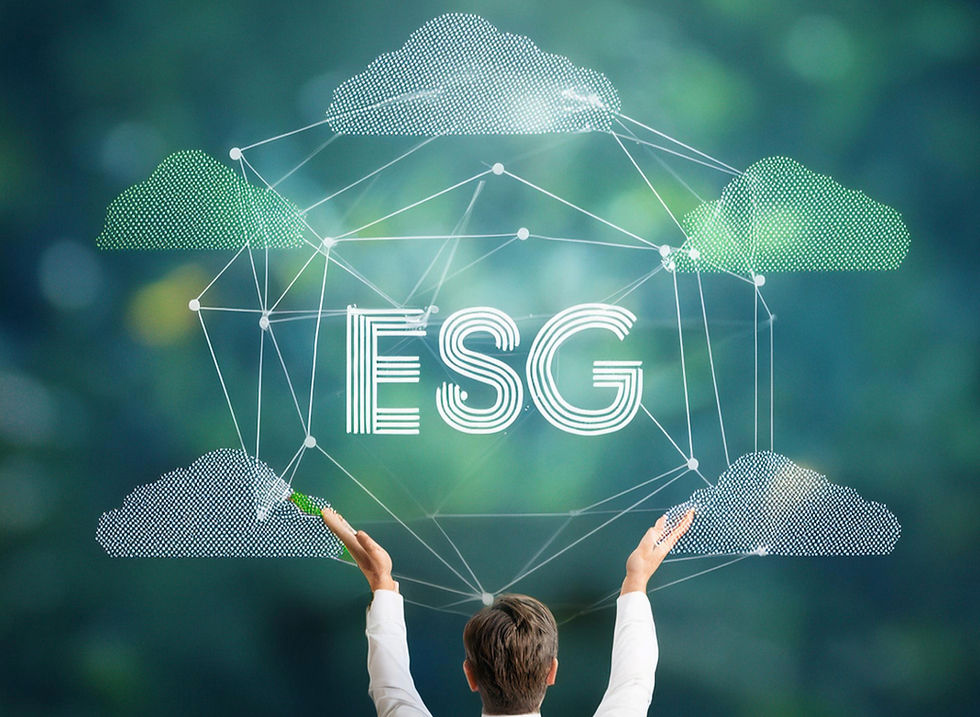Building an ESG-Friendly Project Culture
- Administrator
- Feb 13
- 3 min read

Companies increasingly understand that sustainability, ethical governance, and social responsibility are critical for long-term success. For project leaders and teams, creating an ESG-friendly project culture is essential. This culture ensures compliance and drives value and positive impact.
Developing an ESG-friendly culture requires a focus on building a team mindset that aligns with these values. This article will discuss how organizations can cultivate such a culture and inspire a collective commitment to ESG principles.
Understanding ESG Principles
To nurture an ESG-friendly project culture, teams must grasp the foundational principles of ESG.
Environmental criteria evaluate a project's effects on the environment, including carbon emissions, resource utilization, and waste management. For example, a construction project that incorporates energy-efficient building materials can significantly lower its carbon footprint, potentially reducing emissions by as much as 30%.
Social criteria address an organization’s interactions with employees, suppliers, customers, and communities. This includes practices like diversity, equity, and inclusion efforts, which can enhance team performance. Research shows that diverse teams are 35% more likely to outperform their competitors.
Governance refers to internal practices that guide decision-making, such as ethical leadership and accountability. Companies with strong governance structures tend to be more transparent and gain higher trust from stakeholders.
By fostering a deep understanding of these principles, project teams can establish shared goals that promote sustainable practices.
The Need for Team Alignment
A unified approach is required to create a project culture that supports ESG values. Project teams must cultivate alignment in their values and objectives.
An effective first step is to craft a clear ESG vision—a guiding philosophy for project actions. Teams should hold discussions and workshops to articulate this vision. For example, a tech company may aim for zero waste in its product lifecycle by 2030, engaging team members in brainstorming sustainable solutions.
Fostering a shared understanding of ESG principles helps to build collective responsibility. When everyone is on the same page, it becomes easier to address challenges and innovate.
Training and Development
Equipping team members with the right knowledge and skills is critical for reinforcing an ESG-friendly culture.
Organizations should invest in training programs focused on relevant ESG topics. For instance, a workshop on sustainable practices may cover project management strategies that cut resource use by 20%. This knowledge empowers employees to integrate ESG considerations into their daily work.
Furthermore, offering mentorship and expert-led sessions can enhance ESG competencies across teams. By learning from experienced professionals, team members gain insights that help drive innovative practices.
Engaging Stakeholders
Engaging stakeholders—those affected by or interested in a project—is crucial for ensuring an ESG-friendly culture.
Project teams should actively gather input from stakeholders throughout the project lifecycle. This can be done through surveys or public consultation meetings. For example, when developing a new community park, soliciting feedback from local residents can lead to design choices that enhance user experience while addressing environmental concerns.
Being transparent about project intentions and obstacles helps build trust. When stakeholders see a commitment to ESG values, they are more likely to support the project.
Measuring Impact
Assessing the impact of ESG initiatives is essential for ongoing improvement.
Project teams should set performance metrics that align with their ESG objectives. For example, a company might track CO2 emissions reductions and community engagement metrics. Regularly evaluating these metrics enables teams to identify successes and areas for improvement, helping to shape future projects.
Insights from measuring impact also serve as valuable feedback. For instance, if a community outreach program is less effective than anticipated, teams can adjust their approach based on stakeholder input.
Celebrating Successes
Recognizing achievements related to ESG goals can boost morale and reinforce a sustainable culture.
Teams should celebrate milestones, whether reaching a specific sustainability target or receiving positive community feedback. Such celebrations motivate team members and strengthen their commitment to ESG values, fostering a culture that embraces continuous improvement.
Overcoming Challenges
Transitioning to an ESG-friendly project culture presents challenges.
Some teams may resist change due to ingrained traditional practices. To overcome this, leadership must consistently demonstrate a commitment to ESG principles. Sharing data on long-term benefits—like cost savings from energy efficiency—can help highlight the value of adopting these practices.
Open discussions that address concerns can ease the transition process. Emphasizing competitive advantages, such as enhanced brand reputation and increased stakeholder trust, can motivate teams to embrace change.
Sustaining ESG Culture
Building an ESG-friendly project culture is a continuous journey that requires dedication from all team members.
Organizations can build a culture committed to sustainable success by aligning values with ESG principles, providing training, engaging stakeholders, measuring impacts, and celebrating successes.
As the importance of ESG grows within the business landscape, teams that nurture an ESG-friendly culture enhance their project outcomes and contribute positively to the community and environment. Establishing an ESG-focused mindset leads to a more sustainable and responsible future for all involved.





